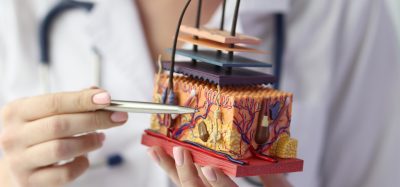New inhaled therapy could treat deadly impacts of asthma
Posted: 14 January 2021 | Victoria Rees (Drug Target Review) | No comments yet
Scientists have developed an inhaled treatment for asthma that prevents excess mucus from building up in mice.


Scientists have created an inhaled treatment that disrupts the production of excess mucus by reducing disulphide bonds and opening up the airways of mice. The researchers say that this treatment could be used to treat asthma in humans.
The study was conducted at the University of Colorado Anschutz Medical Campus, US.
“Currently about 10 percent of the population has asthma,” said the study’s lead author Professor Christopher Evans. “Excessive mucus blocks airflow, causing wheezing and worsening the effects of inflammation and contraction of the muscles that line the airways.”
The team targeted macromolecules in mucus called polymeric mucin glycoproteins, which help protect the lungs and airways from infection in healthy individuals. However, when overproduced, they can make gelatinous plugs that block airways as seen in asthma and other pulmonary conditions.
The researchers tried to shut down this process by breaking up mucin disulphide bonds which contribute to the overproduction of mucus. They treated asthmatic mice with a chemical known as TCEP (tris(2-carboxyethyl)phosphine) which quickly reversed the disease. It also worked on human mucus taken as samples from asthma patients.
“We showed that disrupting mucin disulphide bonds loosens the mucus and reverses the pathological effects of mucus hypersecretion in a mouse allergic asthma model,” said study co-author Dr Ana Maria Jaramillo. “Loosening the mucus reduces airway inflammation, enhances mucociliary clearance and abolishes airway hyperactivity.”
The researchers said that while TCEP would likely irritate human lungs, something similar could be added to drugs treating asthma, chronic obstructive pulmonary disease (COPD), cystic fibrosis and other pulmonary diseases making them much more effective at reducing mucus.
“You can develop safer mucolytic compounds using this kind of strategy,” Evans said. “They could help steroids and albuterol penetrate deeper into the lungs and airways. They could be used as an adjunct therapy.”
“These findings establish grounds for developing treatments to inhibit effects of mucus hypersecretion in asthma,” Evans said. “I believe they have life-saving potential.”
The study was published in Nature Communications.
Related topics
Drug Delivery, Drug Development, Drug Discovery, Research & Development, Therapeutics
Related conditions
Asthma, Chronic obstructive pulmonary disease (COPD), Cystic fibrosis
Related organisations
University of Colorado
Related people
Dr Ana Maria Jaramillo, Professor Christopher Evans








